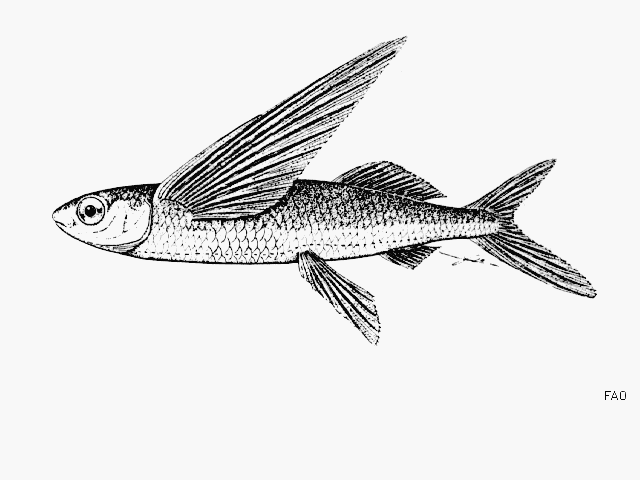| Exocoetidae (Flyingfishes) |
| 24 cm SL (male/unsexed) |
|
pelagic-oceanic; marine; depth range 0 - 20 m, oceanodromous |
| Indo-Pacific: East Africa to Hawaii and the Tuamoto Islands. Probably absent from the inland seas of southeast Asia. Eastern Pacific: isolated population at Soccoro Islands, Mexico, including Revillagigedo Islands. |
|
Dorsal soft rays (total): 13-13; Anal soft rays: 8-9. Pectoral fins almost uniformly grayish, varying in tone but neither hyaline nor blackish, with a narrow pale posterior edge broadening at the tip and toward the axil of the fin. Predorsal scales 28-30. Ventral origin equidistant from about or behind the middle of opercle and base of caudal. Head narrow and pointed for this genus, the snout equal to or slightly longer than eye. Teeth tricuspid. Interobital slightly concave; eye slightly infralateral.
Coloration: Dark above to below midline of side, pale below; dorsal very pale grayish; anal white; caudal uniform dusky; ventrals pale becoming slightly dusky in the center of their base. |
| Epipelagic in coastal and oceanic waters. Often near oceanic islands. May leap out of the water and glide over considerable distances above the surface. Also caught using dipnet and light method (Ref. 9839). |
|
Not Evaluated (N.E.) Ref. (130435)
|
| harmless |
|
Source and more info: www.fishbase.org. For personal, classroom, and other internal use only. Not for publication.

